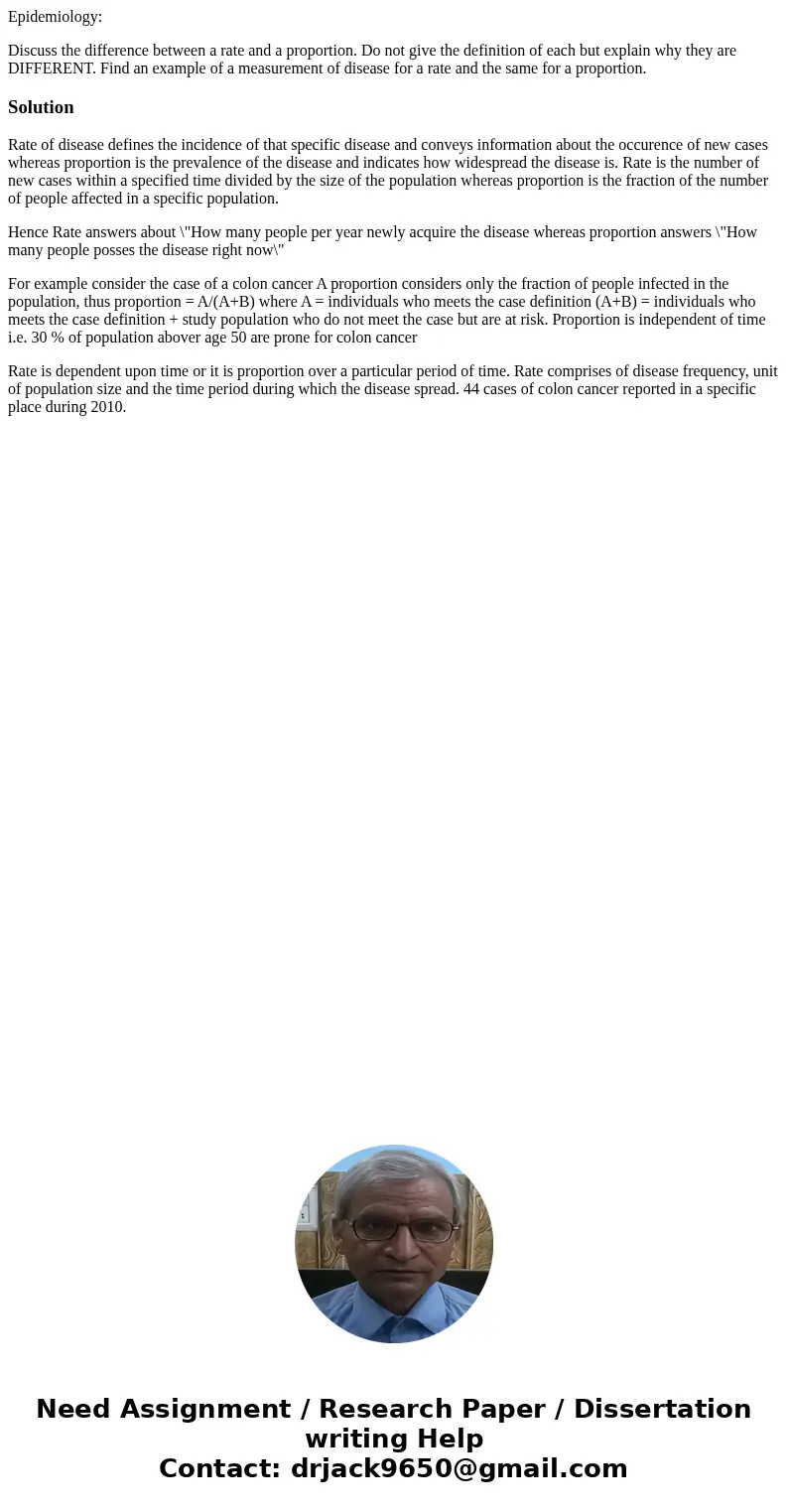Epidemiology Discuss the difference between a rate and a pro
Epidemiology:
Discuss the difference between a rate and a proportion. Do not give the definition of each but explain why they are DIFFERENT. Find an example of a measurement of disease for a rate and the same for a proportion.
Solution
Rate of disease defines the incidence of that specific disease and conveys information about the occurence of new cases whereas proportion is the prevalence of the disease and indicates how widespread the disease is. Rate is the number of new cases within a specified time divided by the size of the population whereas proportion is the fraction of the number of people affected in a specific population.
Hence Rate answers about \"How many people per year newly acquire the disease whereas proportion answers \"How many people posses the disease right now\"
For example consider the case of a colon cancer A proportion considers only the fraction of people infected in the population, thus proportion = A/(A+B) where A = individuals who meets the case definition (A+B) = individuals who meets the case definition + study population who do not meet the case but are at risk. Proportion is independent of time i.e. 30 % of population abover age 50 are prone for colon cancer
Rate is dependent upon time or it is proportion over a particular period of time. Rate comprises of disease frequency, unit of population size and the time period during which the disease spread. 44 cases of colon cancer reported in a specific place during 2010.

 Homework Sourse
Homework Sourse